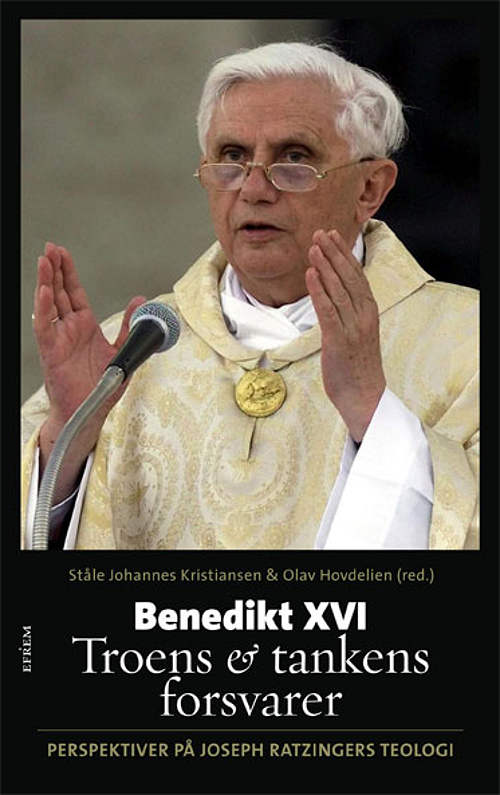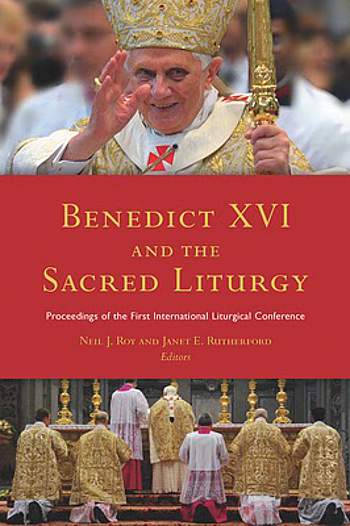I sitt foredrag i Fontgombault er Kardinal Ratzinger ganske skarp mot det man må kunne kalle liberal teologi; som ikke studerer Skriften og Tradisjonen med troens øye, men som føler seg fri til å finne på stadig nye ting. Han skriver: Not only is the authority of the ecclesiastical magisterium downgraded in the eyes of many, but Scripture too; in its place are put changing pseudo-historical hypotheses, which are immediately replaced by any arbitrary idea, and place the liturgy at the mercy of fashion. Where, on the basis of such ideas, the liturgy is manipulated ever more freely, the faithful feel that, in reality, nothing is celebrated, and it is understandable that they desert the liturgy, and with it the Church.
Deretter sier han mer om tre kriterier som gjelder for teologien: 1) at vi har tillit til Skriften, 2) at Skriften leses ut fra Kirkens forståelse og 3) at vår forforståelse av sentrale begreper (her: offer) får stor betydning for vår konklusjon:
Let us return to the fundamental question: is it correct to describe the liturgy as a divine sacrifice, or is it a damnable impiety? In this discussion, one must first of all establish the principle presuppositions which, in any event, determine the reading of Scripture, and thus the conclusions which one draws from it. For the catholic Christian, two lines of essential hermeneutic orientation assert themselves here.
The first: we trust Scripture and we base ourselves on Scripture, not on hypothetical reconstructions which go behind it and, according to their own taste, reconstruct a history in which the presumptious idea of our knowing what can or can not be attributed to Jesus plays a key role; which, of course, means attributing to him only what a modern scholar is happy to attribute to a man belonging to a time which the scholar himself has reconstructed.
The second is that we read Scripture in the living community of the Church, and therefore on the basis of the fundamental decisions thanks to which it has become historically efficacious, namely, those which laid the foundations of the Church. One must not separate the text from this living context. In this sense, Scripture and Tradition form an inseparable whole, and it is this that Luther, at the dawn of the awakening of historical awareness, could not see. He believed that a text could only have one meaning, but such univocity does not exist, and modern historiography has long since abandoned the idea. That in the nascent Church, the Eucharist was, from the beginning, understood as a sacrifice, even in a text such as the Didache, which is so difficult and marginal vis-à-vis the great Tradition, is an interpretative key of primary importance.
But there is another fundamental hermeneutical aspect in the reading and the interpretation of biblical testimony. The fact that I can, or cannot, recognize a sacrifice in the Eucharist as our Lord instituted it, depends most essentially on the question of knowing what I understand by sacrifice, therefore on what is called precomprehension. The pre-comprehension of Luther, for example, in particular his conception of the relation between the Old and the New Testaments, his conception of the event and of the historic presence of the Church, was such that the category of sacrifice, as he saw it, could not appear other than as an impiety when applied to the Eucharist and the Church. … …
For the believing theologian, it is clear that it is Scripture itself which must teach him the essential definition of sacrifice, and that will come from a «canonical» reading of the Bible, in which the Scripture is read in its unity and its dynamic movement, the different stages of which receive their final meaning from Christ, to Whom this whole movement leads. By this same standard the hermeneutic here presupposed is a hermeneutic of faith, founded on faith’s internal logic. Ought not the fact to be obvious? Without faith, Scripture itself is not Scripture, but rather an ill-assorted ensemble of bits of literature which cannot claim any normative significance today.



